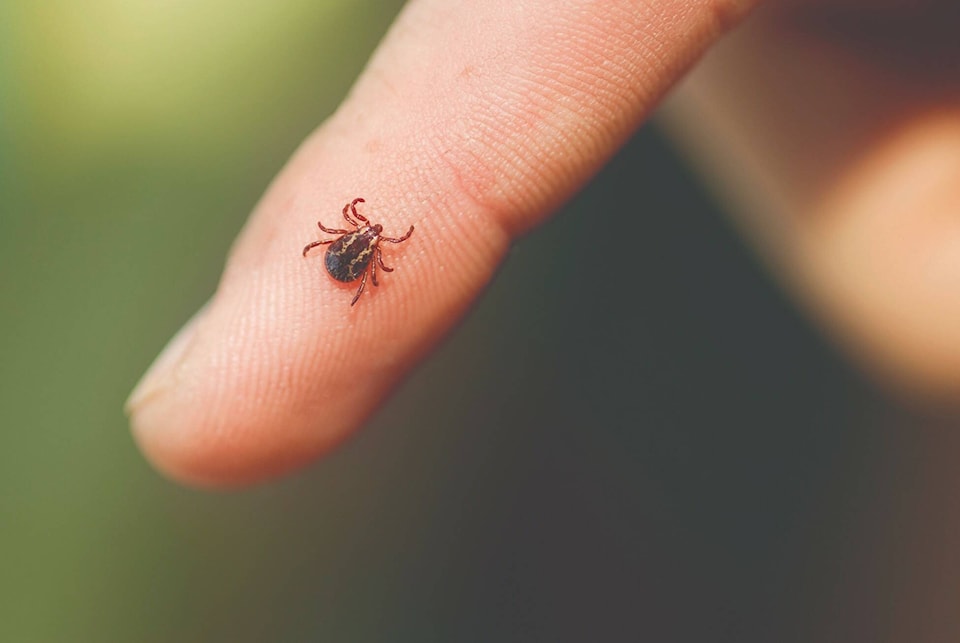Interior Health has put out a helpful guide for the community as they gear up for another tick season this spring.
The regional health authority posted to their website a list of tips and tricks on how to avoid ticks and safely remove them. As spring and warmer weather roll around, more people will be outdoors, hiking in tall grass or wooded areas, and Interior Health says that this can also mean an increased chance of getting tick bites.
Ticks are small bugs that can sometimes transmit disease, as they feed on the blood of humans and animals. Fortunately, there are precautions that can be taken to prevent any tick-related illnesses, and Interior Health provides a step-by-step protection guide.
“There are easy things you can do to protect yourself from ticks, such as covering up before you head outdoors and checking for ticks when returning from a walk, hike or bike ride,” said Dr. Fatemeh Sabet, Interior Health medical health officer.
Sabet adds that while most tick bites do not result in illness, any bite should be cleaned because infection can occur whenever there is a break in the skin. Interior Health says doing a skin check is one of the most important ways to reduce the risk of any tick illness.
Other precautions:
• Walking on clear trails when in tall grass or wooded areas
• Wearing a hat, long sleeves, pants and light-coloured clothing
• Tucking pant legs into socks or boots
• Applying insect repellent containing DEET on uncovered skin
• Carefully checking clothing and scalp (covered or not) when leaving an area where ticks may live
• Regularly checking household pets for ticks
Interior Health goes on to say that if a tick is found, gloves should be worn when carefully removing it without crushing it, as this could cause the tick to inject its stomach contents into the skin. Other tips to remove ticks safely are:
• Using needle-nose tweezers to gently grasp the tick close to the skin
• Pulling the tick straight out without squeezing
• Cleaning the area with soap and water after removal
• Checking very carefully for others
Interior Health also notes that Lyme disease-carrying ticks are more common in the coastal areas of B.C., and individuals with acute Lyme disease do not notice the tick bite that precedes the illness.
“Anyone who has the typical bull’s-eye target skin rash of Lyme disease, or other symptoms compatible with Lyme disease, should see their physician,” Interior Health stated.
The most common tick in the region are the wood tick which do not carry the Lyme disease bacteria, but can carry other diseases.
“Ticks also have toxins that can cause temporary muscle weakness and paralysis if they are attached for several days – especially in children or seniors – but the symptoms fade once the tick is removed from the skin,” Interior Health added. “The signs of many tick-borne infections can be quite similar and include fever, headache, muscle pain and rash.”
READ MORE: Child suffers temporary paralysis from tick bite
READ MORE: B.C. girl left temporarily paralyzed by tick bite sparks warning from family
